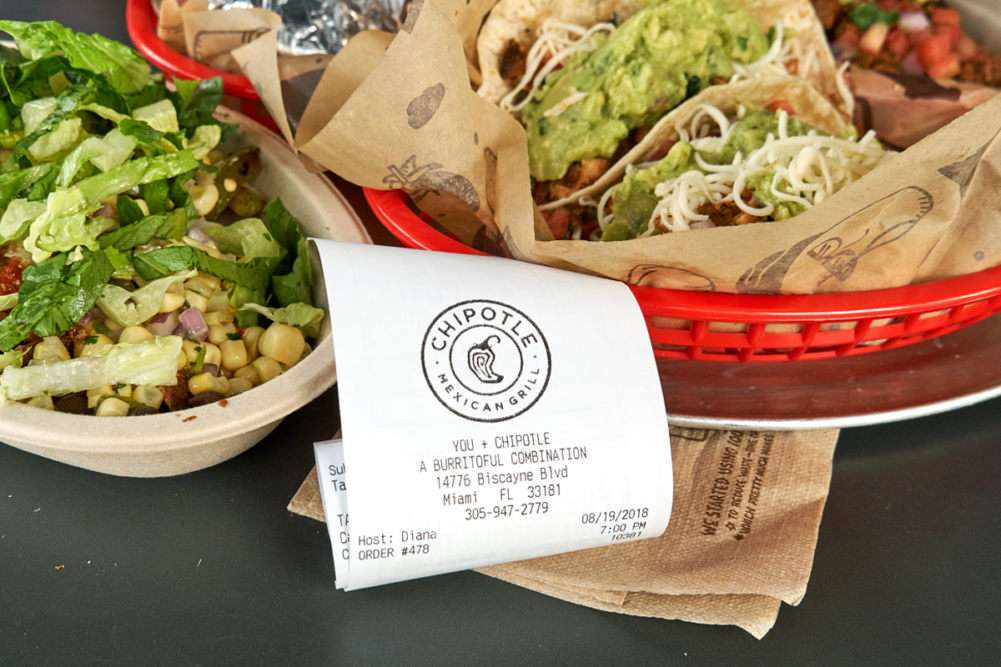NEWPORT BEACH, CALIF. — Higher food costs cut into restaurant level margins at Chipotle Mexican Grill Inc. in the first quarter of fiscal 2022, but price increases and new menu additions helped the company weather the inflationary environment.
Chipotle so far has seen “very little resistance” from customers since raising prices late last year, said Brian Niccol, chief executive officer of the fast casual restaurant chain, during an April 26 conference call with financial analysts.
Net income for the first quarter ended March 31 was $158.3 million, equal to $5.59 per share on the common stock, up from $127.1 million, or $4.45 per share, in the same period a year ago. Total revenue increased 16% to $2 billion from $1.7 billion. Comparable restaurant sales increased 9%, with in-store sales growing 33%. Digital sales accounted for nearly 42% of total sales.
Chipotle recently introduced pollo asada, it’s first chicken innovation in nearly 30 years. Available for a limited time, the new protein has helped bring in additional customers, drive frequency and increase check size since launching on menus in March.
“The reaction has been outstanding,” Mr. Niccol said. “In addition to adding new variations to our health-oriented lifestyle bowls in January, we also attracted new guests with our plant-based chorizo limited-time offering, which proves that you don’t have to sacrifice flavor or food with integrity to enjoy a vegan or vegetarian protein.”
Upcoming menu innovation will center around animal and plant-based protein, dessert propositions and new add-on offerings, he added.
Food, beverage and packaging costs accounted for 31% of total revenue in the first quarter, up 100 basis points from the same period a year ago. Costs were higher across the board, most notably for beef, avocados and paper. Costs for tortillas and dairy also increased during the quarter.
“There’s nothing we can see on the horizon that says things are going to retreat, but they have, at least for the time being, stabilized,” said John R. Hartung, chief financial officer at Chipotle, when asked about the cost pressures. “There’s going to be an inflection point with the pressures of getting our packaging in from overseas and the pressures suppliers are having, whether it’s from a labor standpoint or just from a cost standpoint. What we can hope for is that they don’t step up from there… Right now, if I was going to build a model, I would not build in a reduction in food costs for the fourth quarter. It looks like it’s going to be 2023 before we see that.”
The company aims to avoid — but isn’t ruling out — further price hikes throughout the year, he said.
Accelerating new store development is a key priority for Chipotle. The company is nearly halfway to its goal of reaching 7,000 restaurants in North America. It opened 51 new locations in the first quarter, 42 of which include Chipotlanes. The drive-thru format continues to perform well and is helping increase sales and margins at new restaurants, Mr. Hartung said.
Investing in technology and other innovation initiatives is another area of focus. The company is using personalization and predictive modelling to influence guest behaviors through its rewards program. In late April it launched Cultivate Next, a $50 million venture fund targeting seed to Series B stage startups. It also is expanding testing on Chippy, an artificially intelligent robot that cooks tortilla chips.
“Our goal is to drive efficiencies through collaborative robotics that will enable Chipotle's team members to focus on other culinary tasks in the restaurant,” Mr. Niccol said. “We are going to place Chippy in a southern California restaurant soon, so we can leverage our stage gate process to listen, test and learn from our crew before deciding on our implementation strategy.”




